Solitary bees: how bees live in nature without colonies and hives (7 photos)
When we hear the word “bee,” the first thing that comes to mind is the image of a yellowish hard worker who works for days to create honey. And there is a whole hive of them, and in the middle of the bee house sits the queen bee - a larger individual with special abilities of the reproductive system. 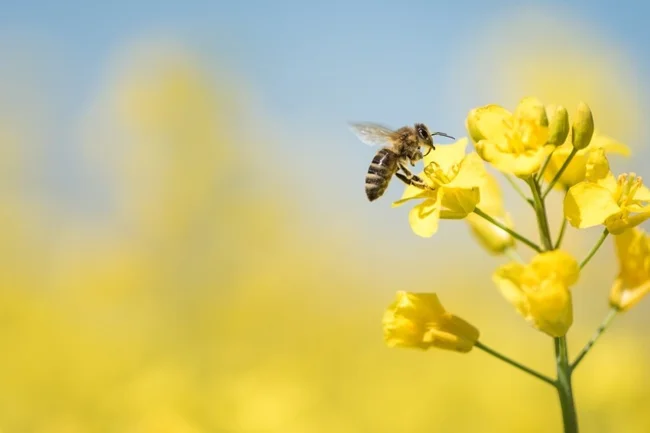
There are about 21 thousand species, a list of which you can study on this English-language resource. But only 7 species out of 21 thousand are honey-bearing. 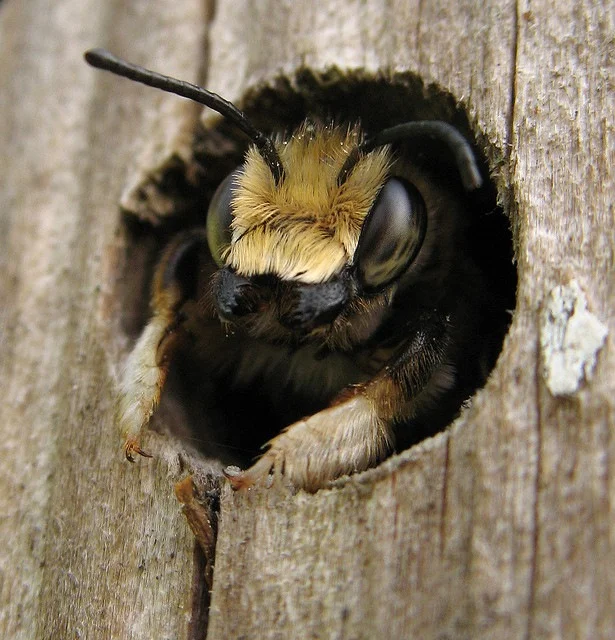
Most species lead a more introverted lifestyle. At the same time, they play an important role in nature, because many of them pollinate flowers much more efficiently than honey plants.
Let's look at how solitary bees live.
How do solitary bees live?
As you already understand, solitary bees do not live in colonies, do not serve the queen, and do not produce honey. They don't produce wax either.
They are not aggressive, do not swarm, and rarely sting (when females sting, it is not painful or dangerous to humans or animals). They vary greatly in size, but are generally smaller than a bumblebee. As a result, they are often mistaken for bees.
Unlike the male drones in a bumblebee colony, male solitary bees have only one job. They mate with the female and then die. 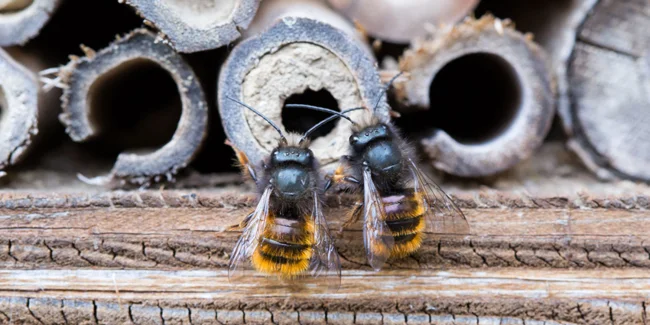
The female herself collects building material for the nest and food for the larvae, then builds an individual cell for each egg. She lays each of her 20-30 eggs on top of a ball of pollen stuck to the nectar. She builds a septum, then repeats the process until the tube or hole is full.
The female does not take part in the rearing process. Once she seals her last cell, her job is also done. She no longer plays any role in the lives of her offspring.
Contrary to popular belief that the honey bee is the best pollinator of all our plants, flowers and trees, many solitary bees are superior in this role.
For example, one red rock bee (Osmia bicornis) pollinates 120 times more flowers than one worker honey bee.
Where do solitary bees live? 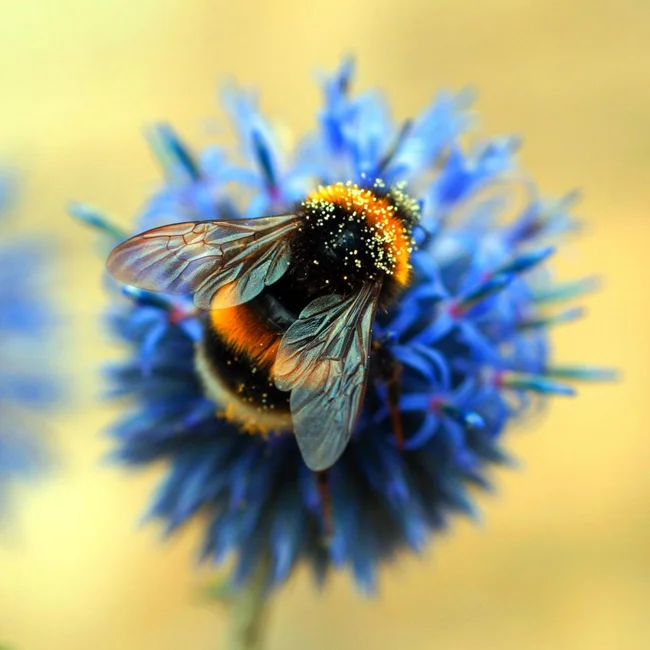
Solitary bees build nests in hollow stems and tubular holes in soil, sand, clay, mortar or wood. 70% are known as foraging bees. They build homes for their young in underground burrows, tunnels and burrows (in soil, sand or clay), and their habitats include:
gardens
road embankments
railway embankments
river banks
swamps
open woodlands
They also nest in tunnels made in dead wood by beetles or woodworms.
But some bees don't need a home. For example, cuckoo bees, because they do not worry about raising offspring.
Parasitic bees
A large assortment of meanness and tricks in the arsenal of these insects.
The female nomad bee lays eggs in the open nests of foraging bees. 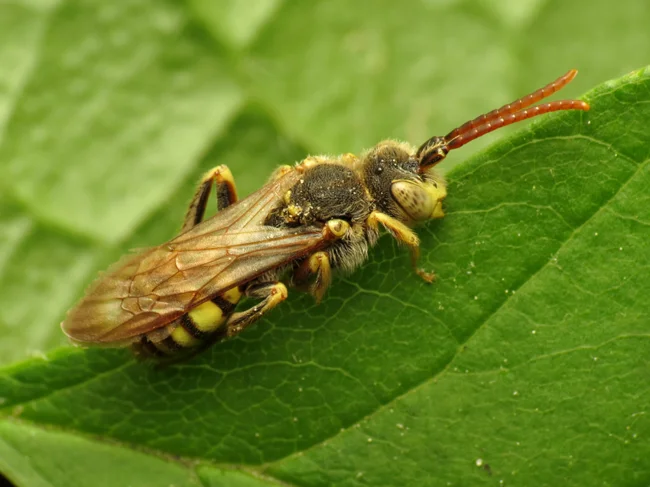
After hatching, the nomad bee larva consumes the host bee's egg along with its food supply.
The female blood bee enters the sealed nest cell, destroys the host's egg and replaces it with her own, and then seals the nest.
Sharp-tailed bees (Coelioxys) hunt leafcutter bee larvae by cutting the entrance to the nest through the leaf wall with the sharp tip of their abdomen and laying their own eggs. The larva crushes the host larva before eating the pollen ball. 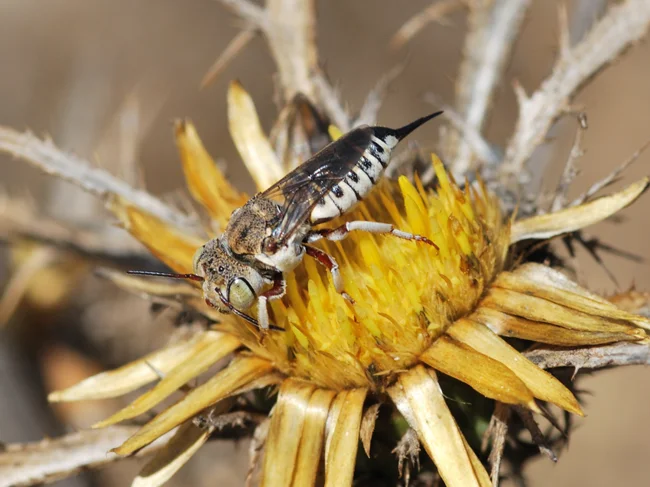
Sharp-tailed bee
And there is another interesting representative that is not bees, but very similar to them. We are talking about a hoverfly or a bee fly. It belongs to flies, but due to its unusual behavior I decided to include it in the article.
Bee flies are known as bomber bees because they collect soil or sand on their abdomen, hover over open nests, and drop their eggs into a tube (the sand or soil gives the egg weight). Bee fly larvae hatch and share food with the host larvae. 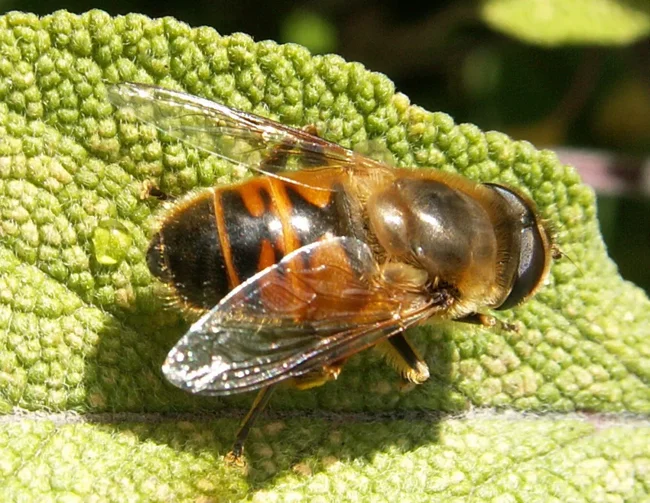
This is the world of bees, which does not revolve around honey-bearing individuals at all.
Have you ever wondered who appeared in nature first: bees or wasps? After all, visually, they are clearly relatives and related to each other.
